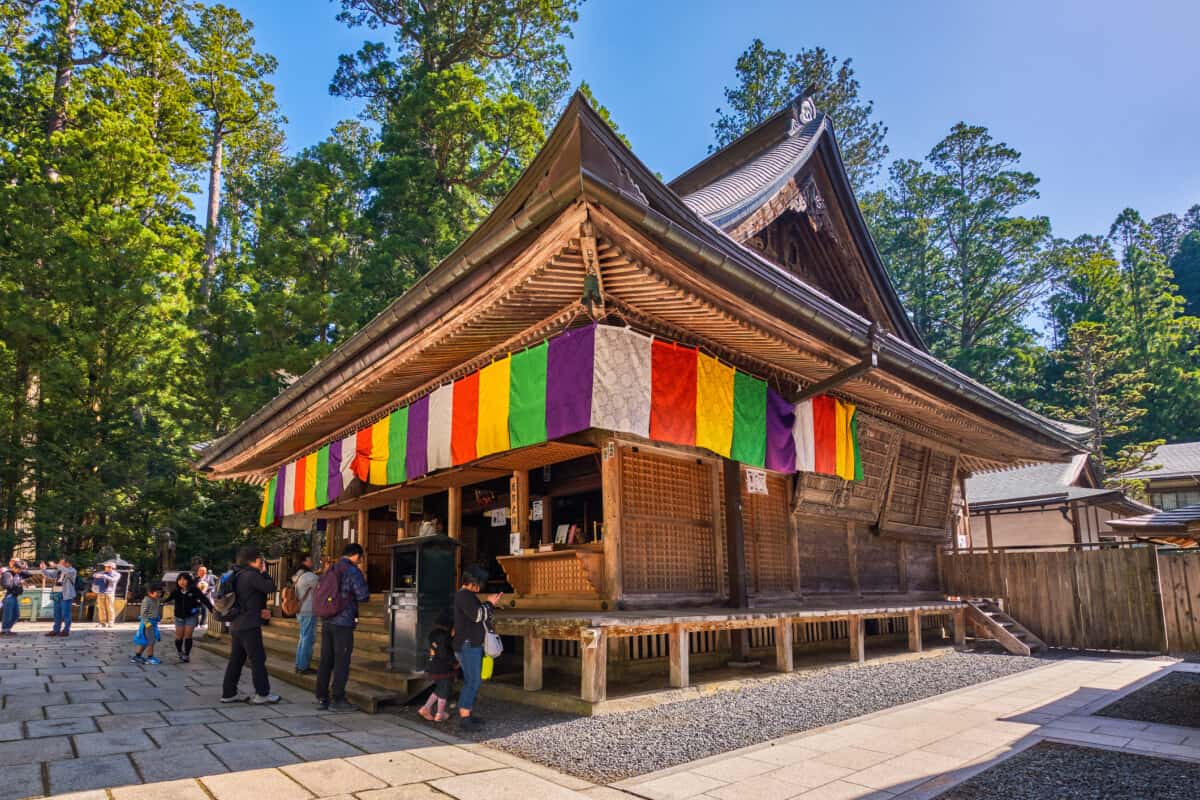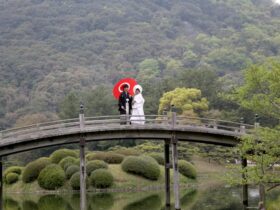Mount Koya is the center place of Shingon Buddhism and is one of Japan’s most spiritual and religious sites. For Buddhists, Mount Koya is a sacred mountain and a popular spot for pilgrimages. Koyason is the temple settlement surrounding the headquarters of this sect and has many cultural and spiritual attractions for travelers.
This article explores eight of the best surrounding attractions to explore during a trip to Mount Koya (south of Osaka), from traditional pilgrimage routes to temple lodgings and grand mausoleums.
Whether you’re looking for a cultural, spiritual, or historical experience, Koyasan offers them all in abundance.
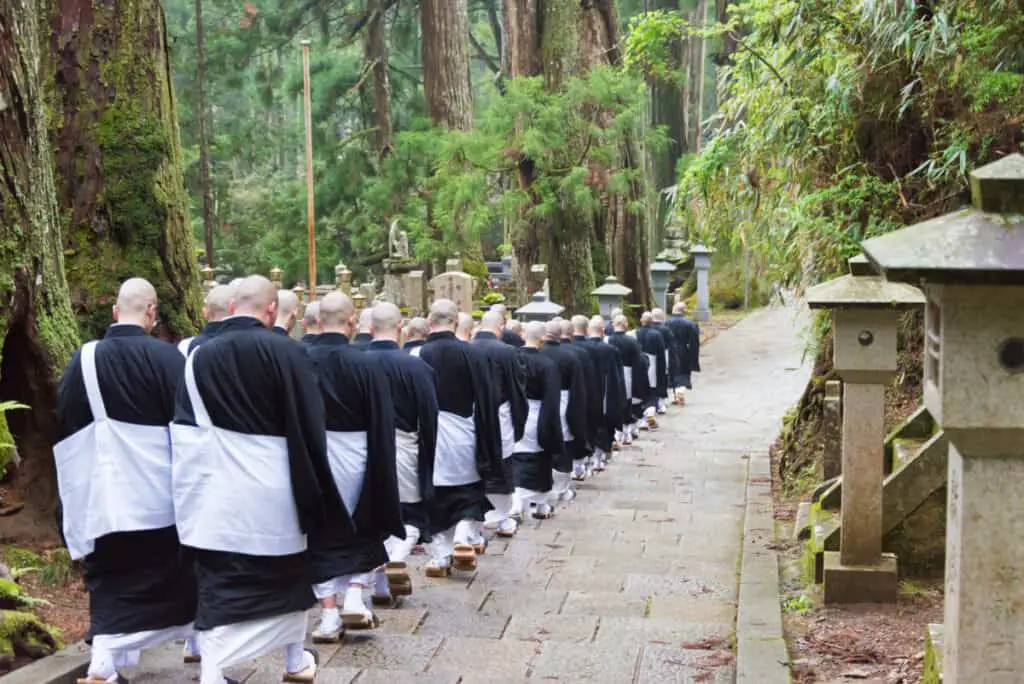
Pilgrimage Trails
Koyasan has been the destination of Buddhist pilgrims for multiple centuries. Though the mountain is now accessible by cable car, which many visitors opt to use, the pilgrimage trails remain a more traditional path to access Mount Koya.
The Koyasan Choishi Michi trail is the original primary approach to the mountain. Beginning at the Kudoyama Station, choishi, or stone signposts, mark out the trail every few hundred feet to guide pilgrims.
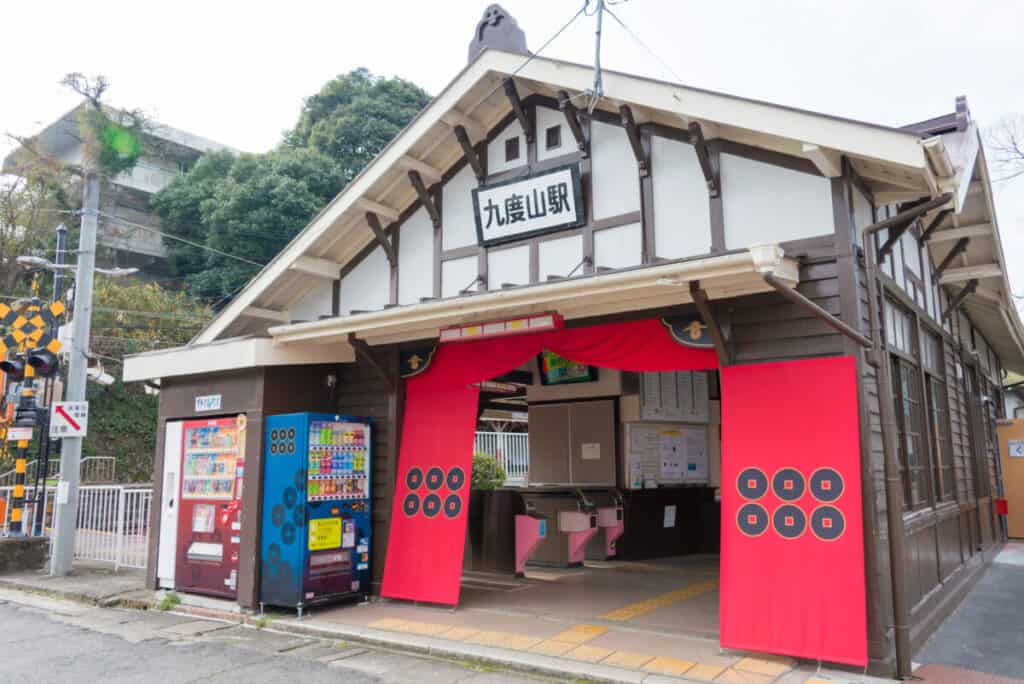
In total, the Choishi Michi trail is about 15 miles long, taking around six to seven hours to hike, and the trail ends at Daimon Gate, a two-story, crimson gate marking Koyasan’s traditional entrance.
One alternative route is the Fudozaka Trail. The path contains less cultural history than its counterparts, but at 1.5 miles long, the track only requires about two to two and a half hours to ascend.
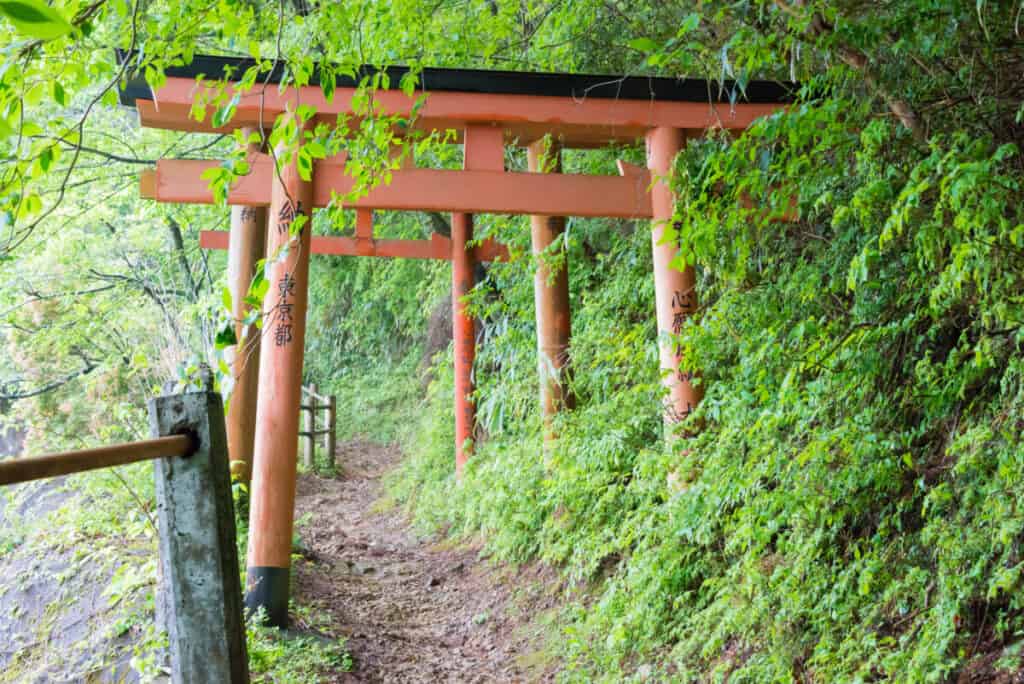
The trail is steep, beginning at Gokurakubashi Station and ending at the temple hall of Fudozakaguchi Nyonindo.
The Women Pilgrims Course leads from the Fudozaka-guchi Nyonindo to the entrance of Okunoin. The Fudozaka-guchi is the only surviving Nyonindo, used to cater specifically to women who couldn’t enter the temple town before 1872.
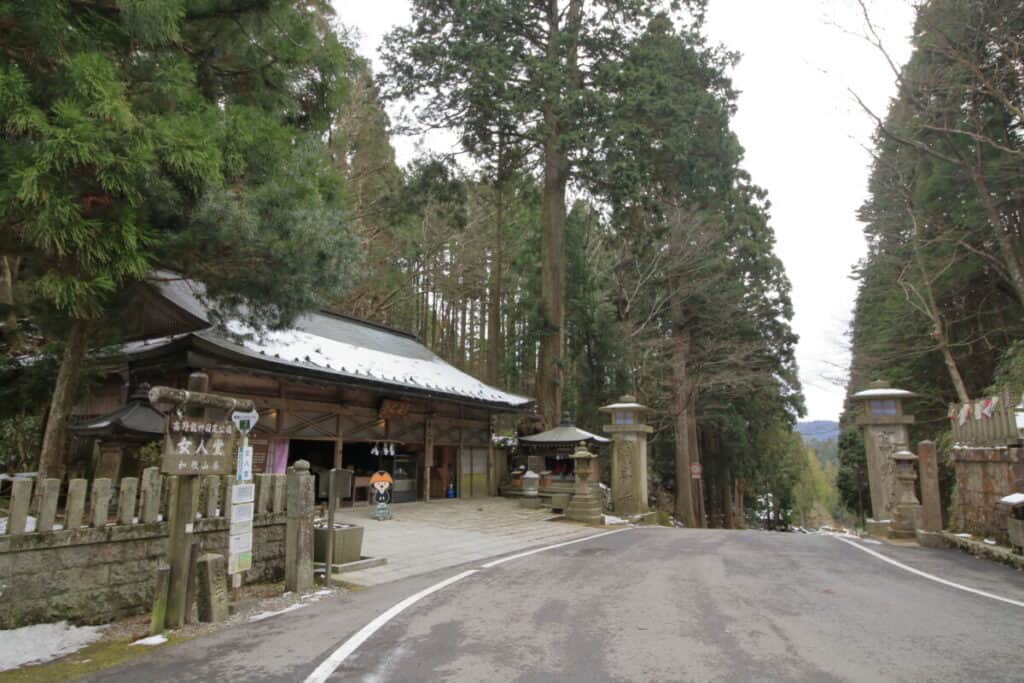
The Women Pilgrims Course is around 4.3 miles long and takes about two and a half hours to hike.
Another alternative – and the most challenging route – is the Kohechi Trail, a long and remote route through the mountains that can take up to a week to complete.
Pilgrims traveling along the Kohechi trail need to make adequate plans and gather suitable equipment before starting this trail. The path is part of the Kumano Kodo trail network and links the shrines of Kumano to Koyasan.
Temple Lodging
Many people travel to Koyasan to visit various temples and natural sites while reconnecting with themselves spiritually.
Despite Koyasan being a small town, it houses over 100 temples. More than 50 of these temples serve as shukubo, meaning that they allow you to spend the night at the temple.
The lodgings typically provide simple rooms with tatami floors, sliding doors, and shared bathroom facilities. Futons are the primary bedding provided to spread across the floor during the evening.
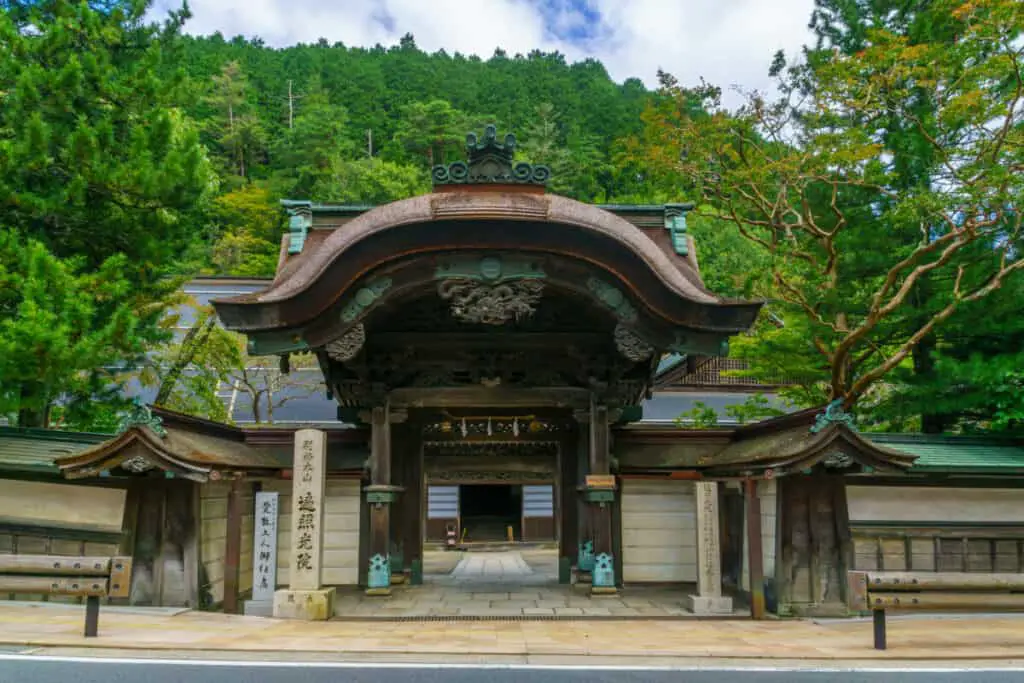
Staying at a shubuko provides a unique opportunity to stay at a temple where you can participate in morning prayer led by the monks and other activities such as sutra copying and meditation.
Sutra copying is a form of calligraphy, known as shakyo, in which you copy a variety of ancient Buddhist sutras.
Temple lodging offers an intimate insight into the life of a Shingon Buddhist monk; through engaging in various activities, you will gain a deeper understanding of the meaning of monastic life.
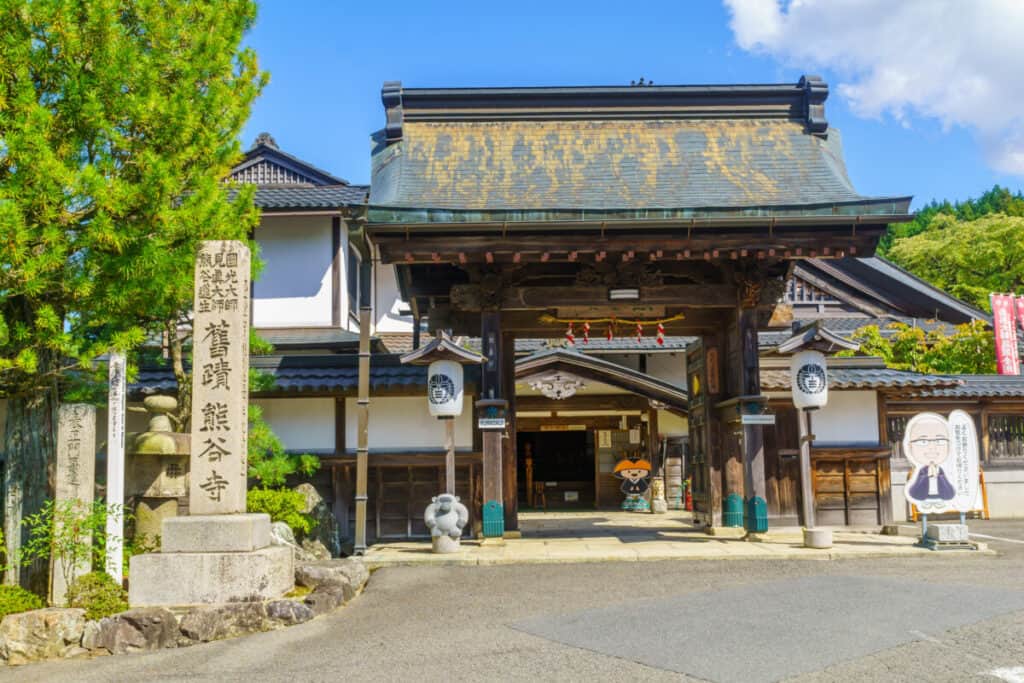
Monks teach the art of Ajikan or visualized meditation at many of the temples, and you can try a walking meditation through the temple’s halls and gardens to realign with your sense of inner peace.
Shojin ryori, a form of vegetarian cuisine based on The Five Principles and consisting of five distinct flavors and colors, is the dish provided at most traditional meals. The soy-based dishes avoid the use of meat and fish and change with the seasons to best nourish the body and the soul.
Temple Lodging 10 Best Stays Via Tripadvisor
Okunoin Temple
The Okunoin Temple is the site of the mausoleum of Kobo Daishi, the founder of Shingon Buddhism and an integral figure in Japan’s religious history.
The common belief is that Kobo Daishi did not die, instead, he rests in eternal meditation while waiting for the future Buddha. Meanwhile, he provides relief to those who ascend this pilgrimage spot in search of enlightenment.
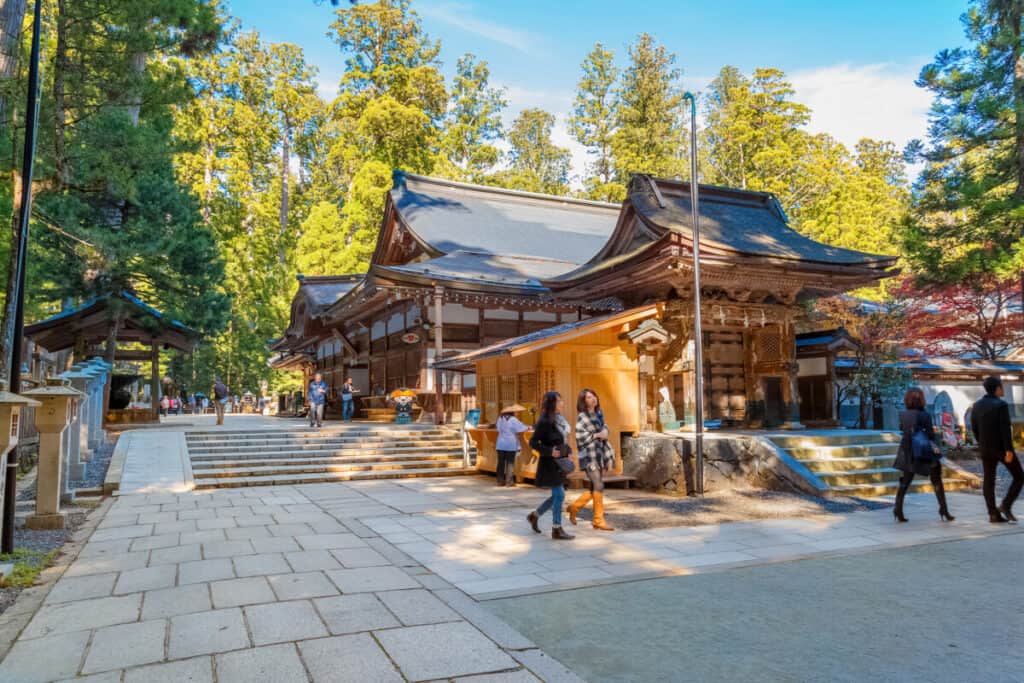
The Ichinohashi Bridge marks the entrance to Okunoin. Visitors should bow to this bridge to pay their respects to Kobo Daishi before crossing and entering the cemetery.
Over 200,000 tombstones line Okunoin’s cemetery for a 1.25-mile stretch that leads to the mausoleum of Kobo Daishi. The tombstones represent the individuals, including prominent monks and feudal lords, who wished to be close to Kobo Daishi and receive enlightenment upon their death.
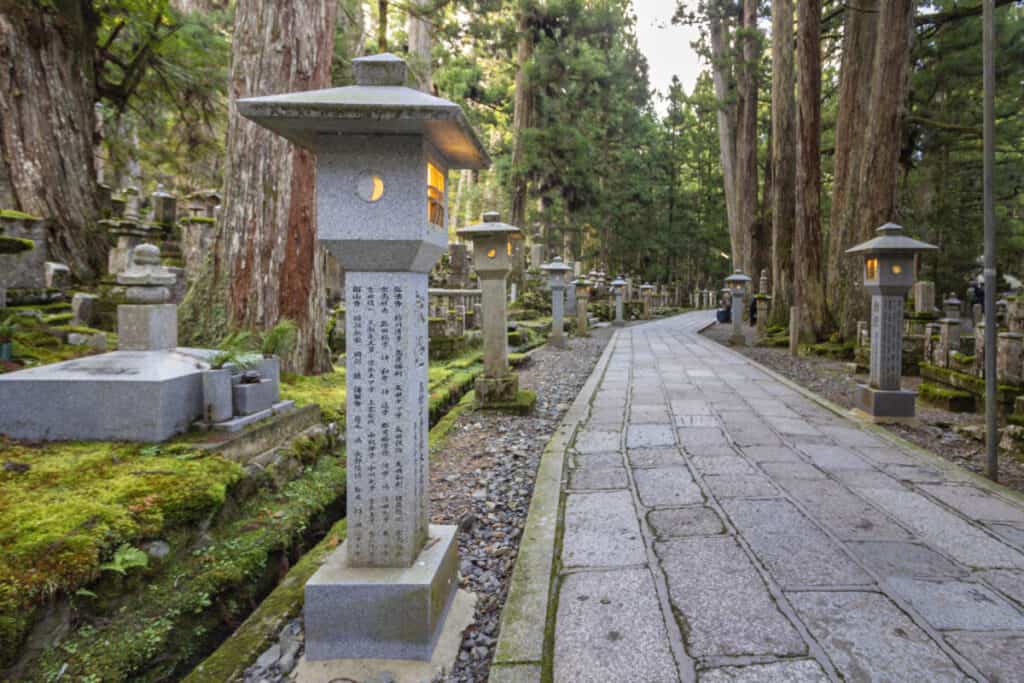
There is an alternative path that is half the length – at .62 miles long – and houses the tombs of the more recently deceased individuals.
Both paths merge at the Gokusho Offering Hall, where a row of statues depict the Bodhisattva Jizo, who looks after travelers and children, along with the souls of the deceased. Here many visitors stop to make offerings and pray for their departed family members.
Behind the Mizumuke Jizo, the Gobyobashi Bridge leads to the innermost grounds of the temple, where photography, food, and drink are forbidden.
Beyond the bridge lies the Miroku Stone, challenging visitors to lift it from a lower platform to a higher one. The belief is that the stone will feel lighter to people who are good and can connect to the Miroku Bodhisattva.
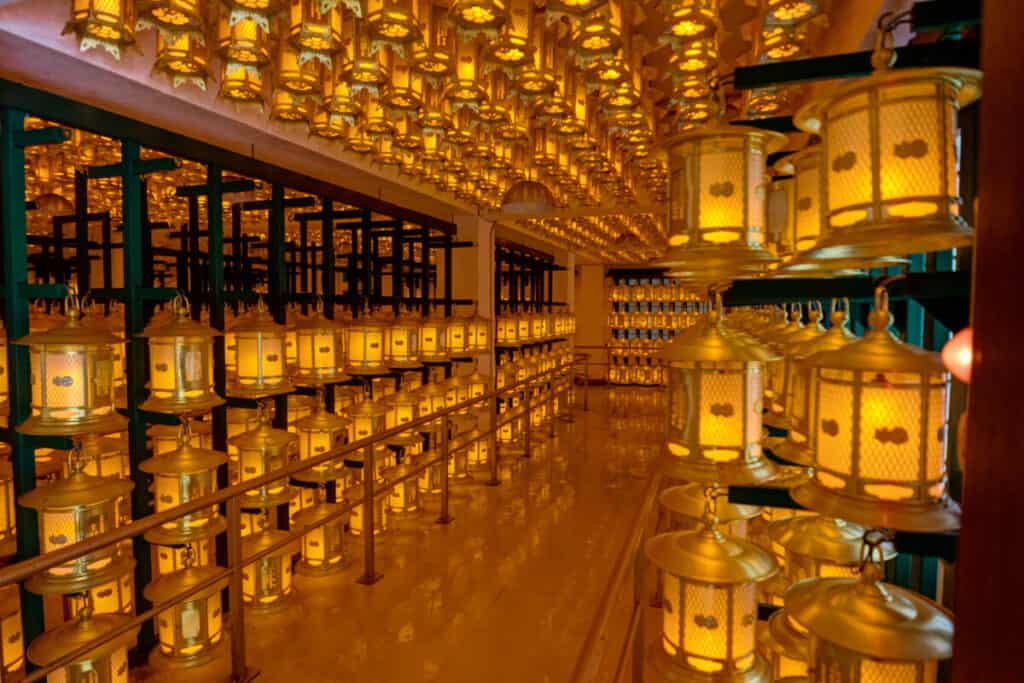
Okunoin’s main hall for worship is Torodo Hall or the Hall of Lamps, which contains more than 10,000 lanterns that worshippers have donated. The basement of the hall includes 50,000 tiny statues that were donated to the temple in 1984, marking the 1150th anniversary of Kobo Daishi into eternal meditation.
Kongobuji Temple
Located in the center of Koyasan is the Kongobuji Temple, which began its construction in 1953. Built by Toyotomi Hideyoshi to commemorate his mother’s death, the temple later merged with its neighbor to become the head temple of Shingon Buddhism.
Upon entering the building, visitors will approach the Ohiroma Room used for religious ceremonies and important rituals.
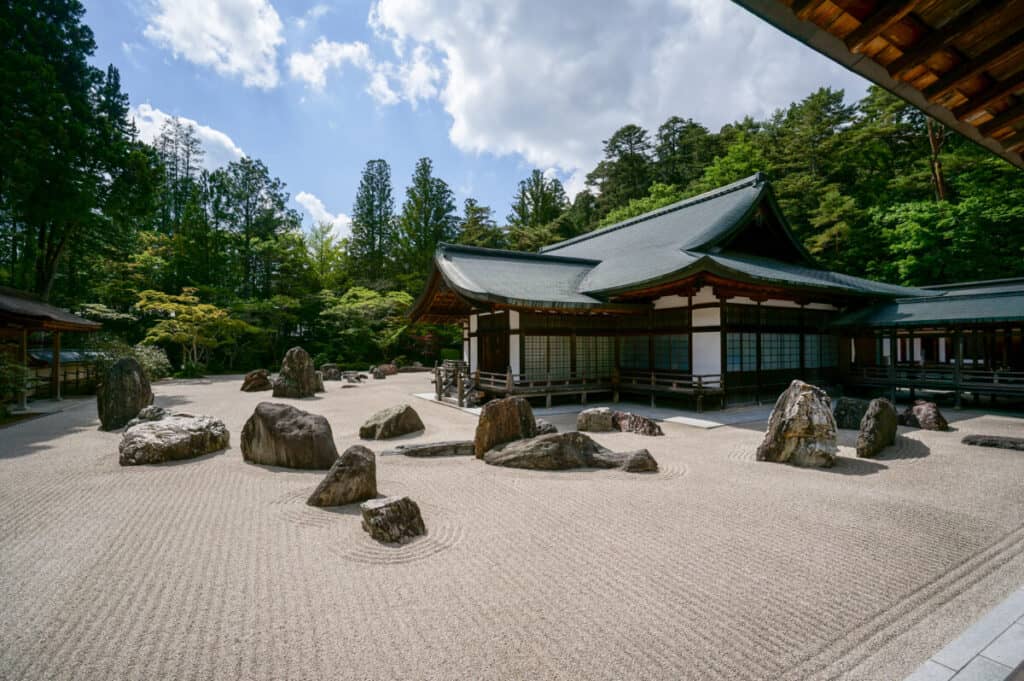
Next to the Ohiroma Room are the Plum and Willow Rooms, so-called due to the paintings on their sliding doors. It was in the Willow room that Toyotomi Hidetsugu committed suicide under the instruction of his uncle.
From the Ohiroma room, a long corridor leads to a recently added wing of the temple complex, which invites visitors to enjoy light refreshments in a tatami hall. The sliding doors of the adjacent building feature seasonal flowers along with the story of Kobo Daishi’s founding of Koyasan.
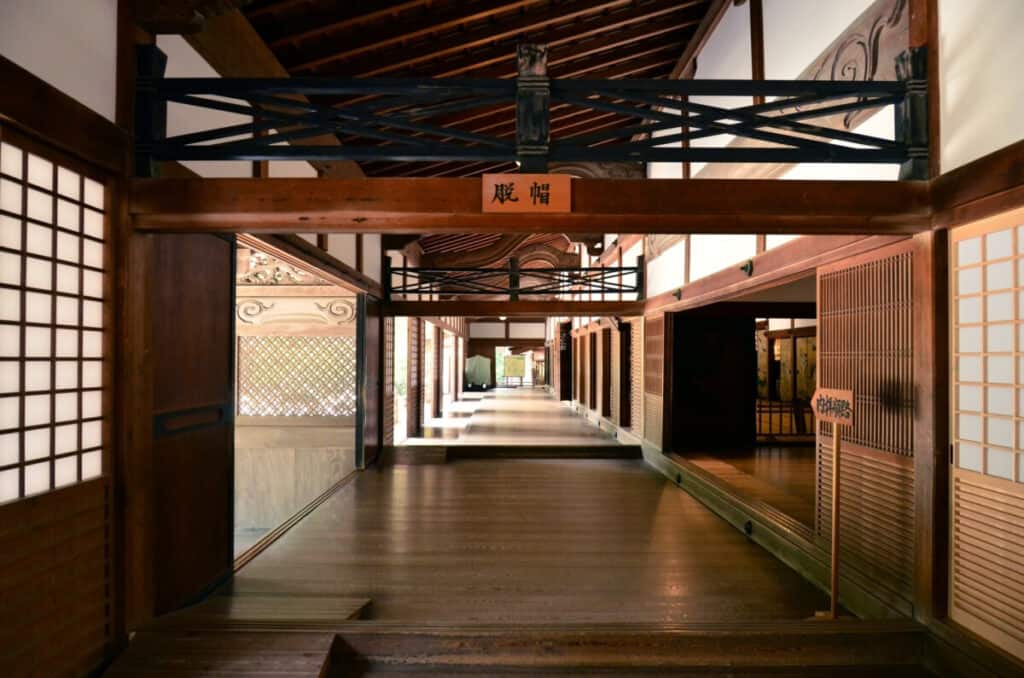
Behind the building lies Japan’s largest rock garden: Banryutei Rock Garden. Large rocks taken from the birthplace of Kobo Daishi represent a pair of dragons emerging from a sea of clouds.
Kongobuji Temple Official Website
Garan
Since Koyasan’s founding in 816, Garan has become one of the most important areas of Mount Koya, where Shingon monks have congregated for millennia to train, study and perform rituals. And Buddhist monks continue to gather at this sacred site to host important events and ceremonies.
According to legend, Kobo Daishi was studying in China and searching for a place to begin his new religion. After praying for guidance, Kobo Daishi decided to throw his Sanko and establish a temple wherever it landed.
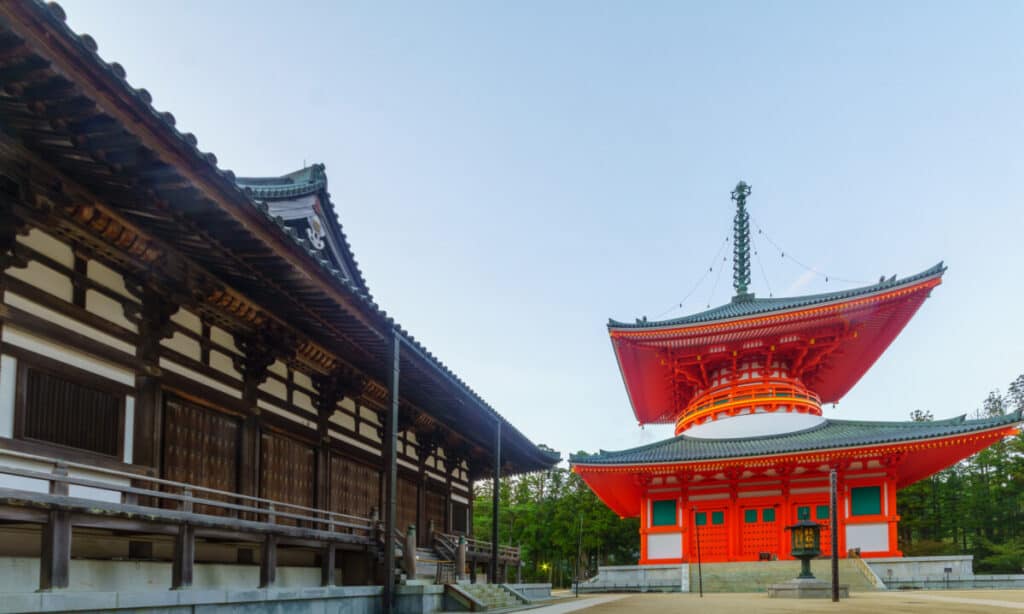
As Kobo Daishi threw the Sanko, it traveled across the ocean and landed in a pine tree on top of a mountain. Thus began the construction of Garan, and the pine tree still grows in its grounds today.
Among the most prominent buildings of the Garan is the Kondo, a large wooden temple that hosts significant ceremonies. Having burned down multiple times, its temple’s current iteration dates back to 1932 and holds an image of Yakushi Nyorai, the Buddha of medicine and healing.
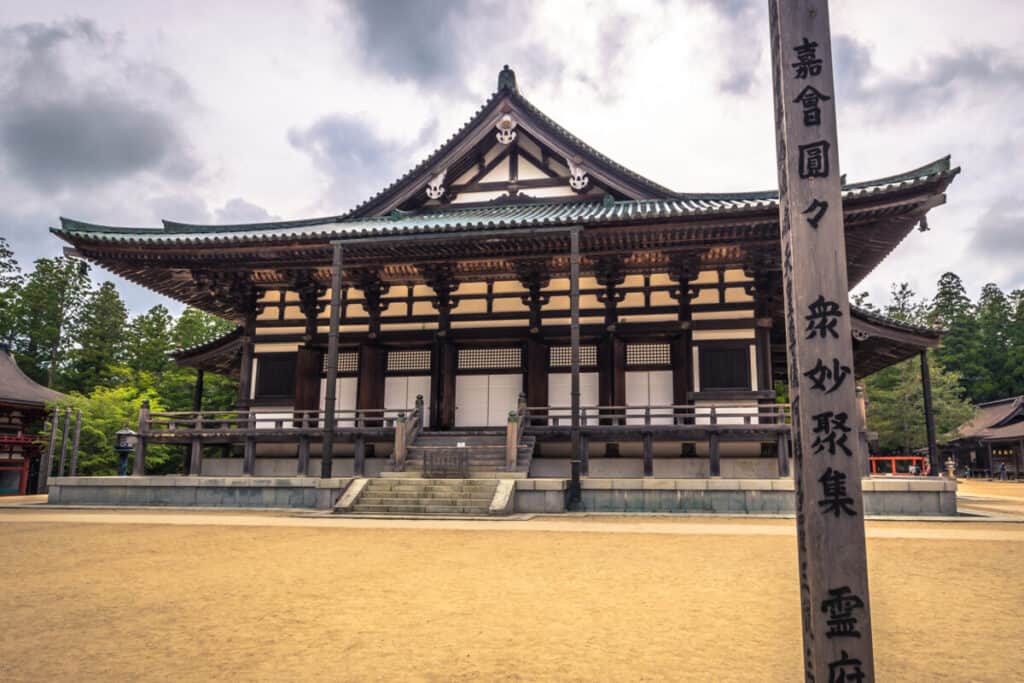
Next to the Kondo hall sits another prominent building, the Konpon Daito Pagoda. The pagoda stands at 147 feet tall and holds a statue of Dainichi Nyorai, the cosmic Buddha. Sculptures and pillar paintings surround the Dainichi Nyorai. This surrounding artwork combines to create a three-dimensional mandala or metaphysical map of the cosmos.
Danjo Garan Sacred Temple Complex Official Website
Reihokan Museum
The Reihokan Museum houses and preserves the religious and cultural treasures of Koyasan. Its entrance hall, styled in the fashion of Uji’s Byodoin Temple, houses temporary and permanent exhibitions in three exhibition halls.
The Reihokan collection contains thousands of religious works of art, Buddhist sculptures, mandalas, calligraphies of documents and sutras, and religious tools. The scroll is most notable, which depicts the “Reclining Image of Sakyamuni Buddha on His Last Day.”
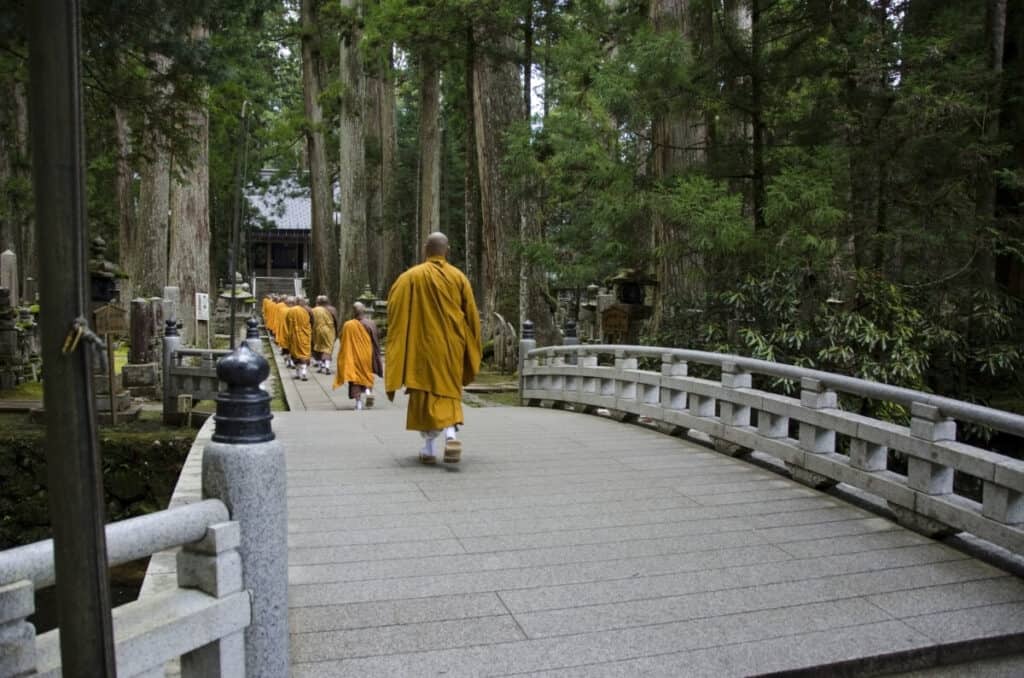
In total, the museum stores 78,000 items with some 28,000 designated cultural items. The most valuable objects are designated Important Cultural Property or National Treasures.
Reihokan Museum Official Website
Daishi Kyokai
Daishi Kyokai is the administrative center of Shingon Buddhism, which spreads the teachings of Kobo Daishi. Within the complex are two buildings: a traditional temple hall, Henjoden, constructed in the dedication of Kobo Daishi in 1915, alongside a more modern facility for lectures and training.
Among the activities that visitors can participate in are Jukai and shakyo.
Jukai is a formal ceremony for Buddhist laypeople. You can participate in the ceremony without becoming a Buddhist; you only become Buddhist if you wish to.
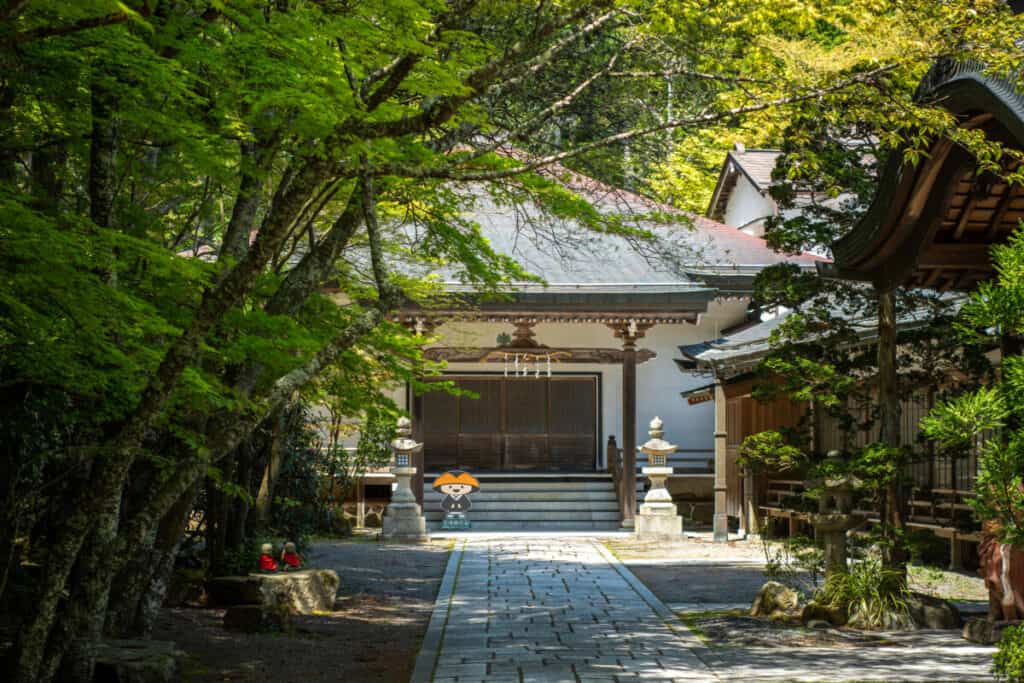
The Jukai ceremony takes place in a dark room where participants sit on a tatami floor and recite following a priest. Within the tradition, the layperson repents their previous misdeeds, takes refuge in the Buddha, and repeats the Ten Wholesome Precepts.
Shakyo, also referred to as a sutra copying, is a historical form of meditation and devotion. Sheets of paper are available for individuals to use. They have the Heart Sutra lightly printed on them. The participants may then trace this kanji script with a brush pen.
Tokugawa Mausoleum
The Tokugawa Mausoleum was built in 1643 by Tokugawa Iemitsu, the third shogun in his dynasty, to honor his grandfather Tokugawa Ieyasu and his father Tokugawa Hidetada, the two most prominent members of the family that ruled during the Edo era.
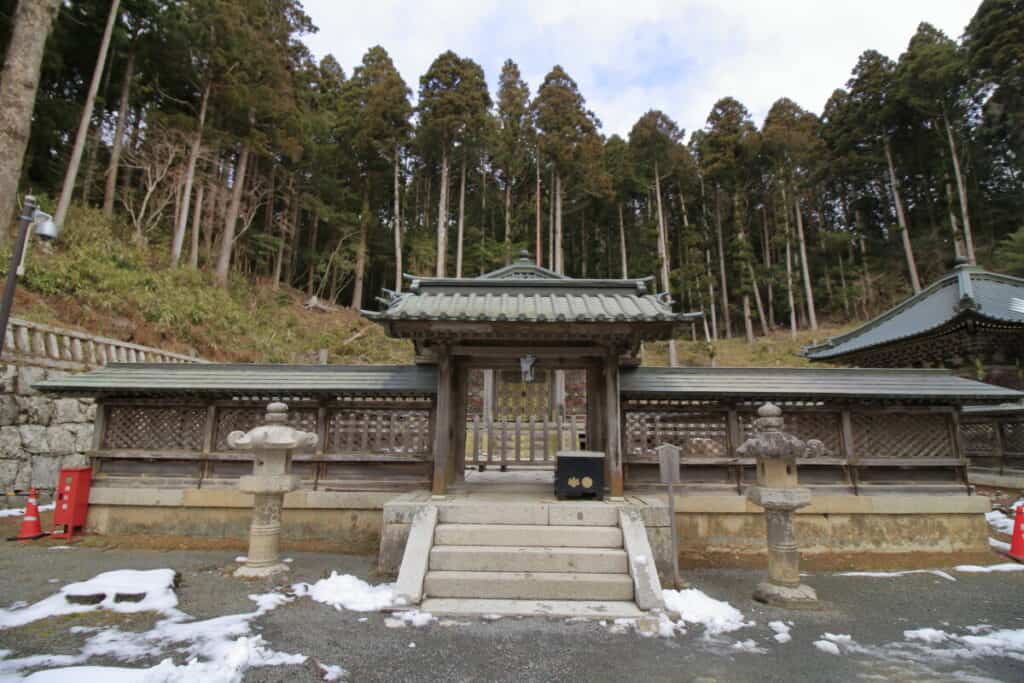
Tokugawa Mausoleum houses two identical buildings with intricate carvings and ornamentation, gracefully sloped roofs, and gold leaf. The right one enshrines Ieyasu; the left Hidetada and the pair took 20 years to complete.
The site is designated national cultural property due to its cultural representation of architecture in the early Edo period.
Final Thoughts On Exploring Mount Koya
From the original monastery created by Kobo Daishi to the spiritual settlement around Mount Koya today, this sacred mountain is now a UNESCO designated World Heritage Site.
Part of the pilgrimage routes and sacred sites within the Kii mountain range, this mountain is home to world-famous sites that can be amazed by people from all walks of life.
Koyasan Travel Guide

